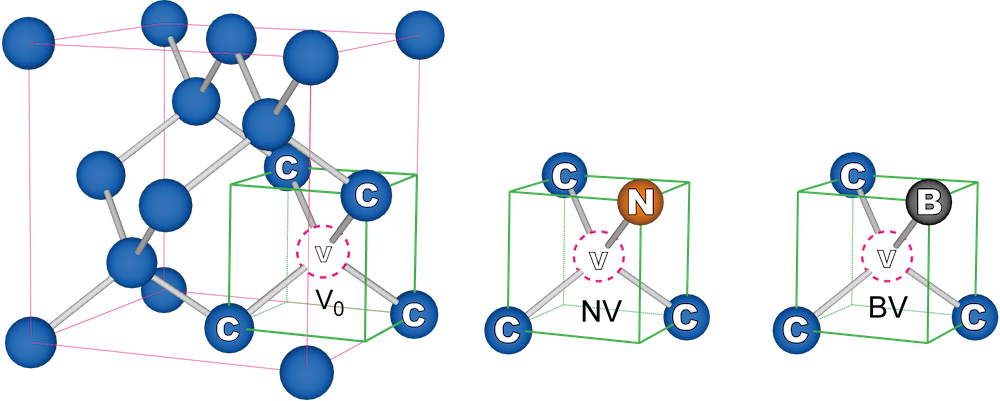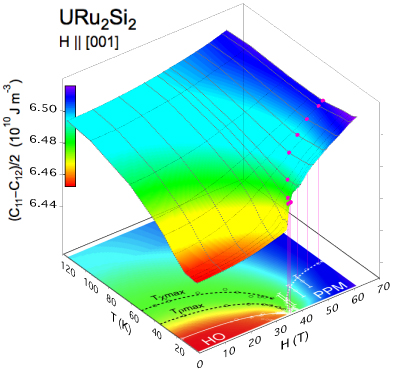The Mysterious Softening Discovered in Diamond
-- A New Possibility for Enhancing the Performance of Next-Generation Quantum Computing Technology --
Points
>> The elastic modulus of synthetic diamond single crystals was precisely measured at ultra-low temperatures approaching absolute zero (~0.02 Kelvin).
>> All three types of diamonds—each differing in origin—exhibited a softening behavior below 1 Kelvin.
>> The origin of this anomalous softness is suggested to be previously unidentified lattice defects present at concentrations as low as parts per billion (ppb).

Fig. 1 Crystal Structure of Diamond and Various Atomic Vacancies
Abstract
A research team led by Prof. Tatsuya Yanagisawa from Hokkaido University, together with scientists from Dresden High Magnetic Field Laboratory, HZDR and TU Dresden, as well as Niigata and Kyoto Universities, has made a surprising discovery: synthetic diamond becomes softer when cooled to extremely low temperatures, close to absolute zero. This unexpected behavior hints at the presence of a new kind of quantum state inside the diamond—something that could play an important role in future technologies like quantum computers and ultra-sensitive sensors.
Diamonds aren’t just beautiful—they’re also known for being incredibly hard and excellent at conducting heat. Because of these features, they’re used in many advanced technologies. Synthetic diamonds, which are made in a lab and contain very few defects or impurities, are especially promising materials. They’re already being studied for their potential in high-tech fields like quantum information. In particular, a special kind of defect in diamonds, called an NV center, is attracting attention for its ability to work as a tiny, super-sensitive sensor or quantum bit (qubit), even at room temperature.
Until now, most research has focused on diamonds that were deliberately irradiated by particle beams to create these defects. But what happens in pure, non-irradiated diamonds at extremely low temperatures was still a mystery—especially when it comes to their elasticity, or how soft or hard they are.
In this study, the team examined three types of lab-grown diamonds using high-precision ultrasound wave techniques. They found, for the first time, that all three types became slightly softer—by about 0.01%—when cooled below 1 Kelvin (that’s about minus 272 degrees Celsius). This softening seems to be linked to a hidden quantum state in the diamond, one that behaves like a kind of tiny electric field shape (called an electric quadrupole).
Interestingly, this phenomenon can’t be explained by any known defects like nitrogen or boron, meaning the exact cause is still unknown. If future research can reveal more about this mysterious behavior, it could help scientists create better quantum devices with fewer errors—and might even lead to big improvements in the performance of quantum computers and sensors in the years to come.
This research was published as an open-access article in the online edition of the Journal of the Physical Society of Japan (Letters) on 10th, June 2025.
この記事には続きがあります:続きを読む ...





